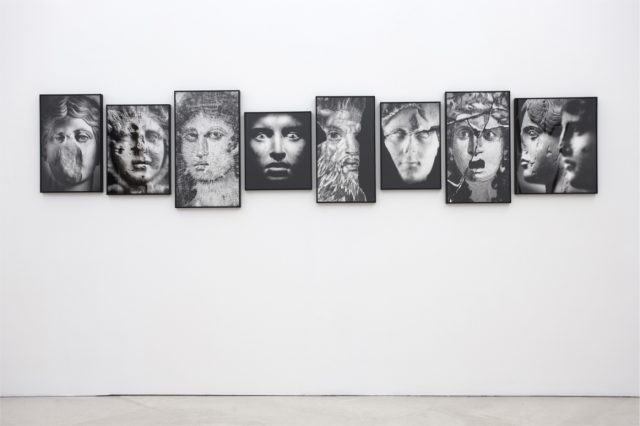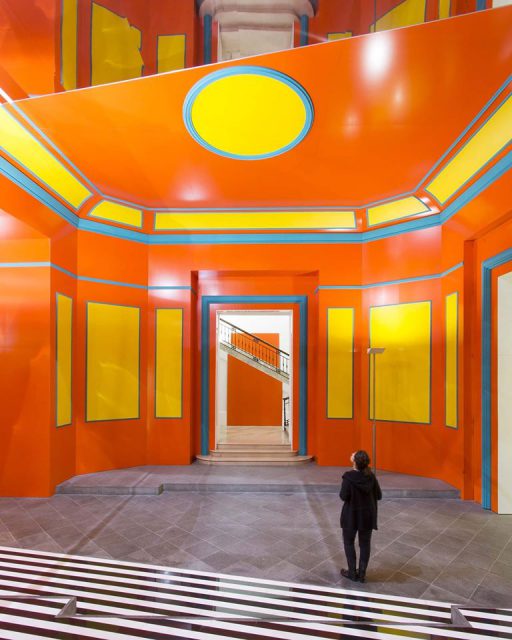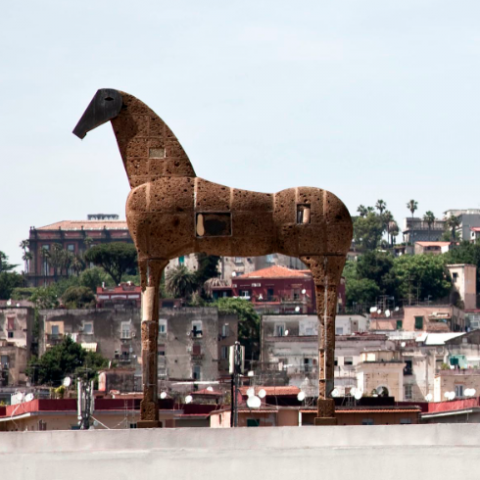During the years when photography was prevalently used for documentary purposes, Mimmo Jodice (Naples, 1934) experiments with the potential of the genre, conducting his research in the area of the Conceptual Art. The nude, the portrait and the everyday object become the pretext for the artist’s investigation of technique and the language of photography, affording emotion and interpretation secondary importance. Hence, Jodice experiments with and deconstructs, he combines Abstract-Cubist elements with figurative ones, he intervenes on paper using the collage and tearing, and, even before, he works in the darkroom to impose movement and potential to static subjects.
In 1968 the artist begins collaborating and showing with Lucio Amelio first, and Lia Rumma and Studio Trisorio later, taking part in the cultural climate and to its intrinsic experimental vivacity that Jodice will bear witness to in the book Mimmo Jodice. Avanguardie a Napoli dalla contestazione al riflusso, published in 1996. In the 1970s, the artist’s lens and gaze broaden to include the social reality: Naples, cholera, marginalization, poverty are portrayed without any chronicling and deprived of any intentional temptation to do reportage (Il ventre del colera, 1971; Vedute di Napoli, 1980).
Starting in the 80s, Jodice begins to further subtract the figure from space. The landscape takes the place of man, becoming almost the metaphysical expression of an atemporal and universal memory. In this excavatin action, the past becomes the new opportunity to research traces of the present, and to better contain the embarrassment toward modernity that is felt to be disquieting and depersonalizing.
Hence, in reference to the cycle in the collection entitled Anamnesi, initiated in 1982, in which, while portraying fragments of antique statuary and mosaics he aligns them along the common horizon line of the gaze, placing them on this side of time and space, Jodice says: “under the surface of calm expressiveness, these faces, these wide-open eyes have seen far-away events, they contain and evoke my restlessness”. The journey through memory at first begins with the findings of ancient civilizations, then it arrives in the Mediterranean, where time and history are absent owing to the undisputed predominance of the myth (Mediterraneo). In the 90s, Jodice’s photographs instead show new fragments of everyday reality, these too suspended in an unreal dimension: they are the still lifes of modern times, both disquieting and unreal (Eden, 1998).
In 1998 and 2008 Jodice shows his work at the Museo Nazionale di Capodimonte, and in 2011 the Louvre dedicates a major solo show to his work, a further exploration of the act of looking at the world via a masterful photographic suspension, beyond the limits of individuality, time, space.
OSdV


